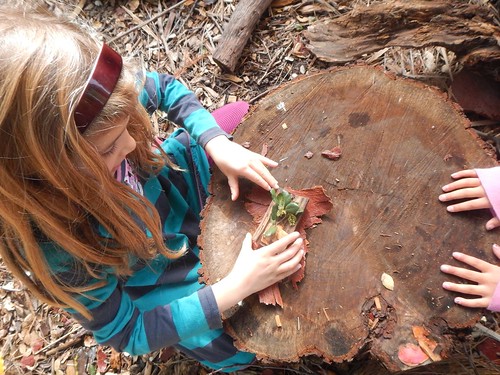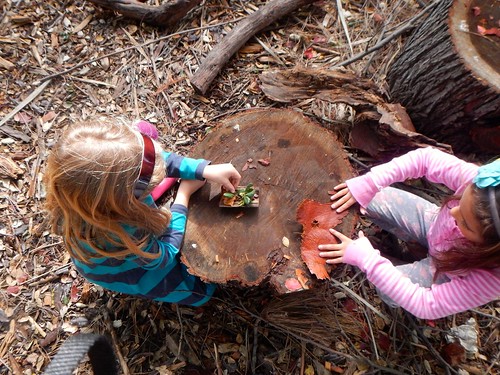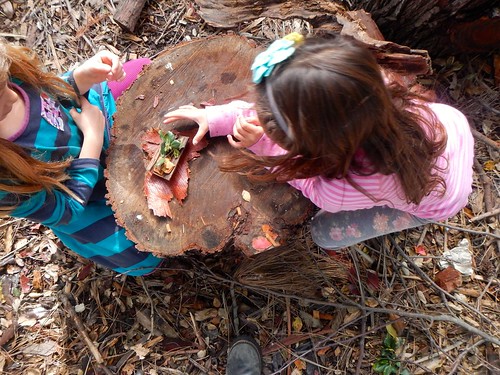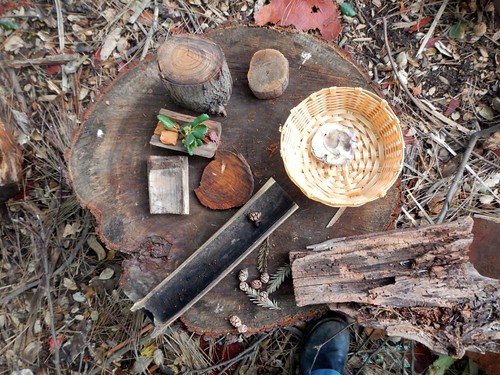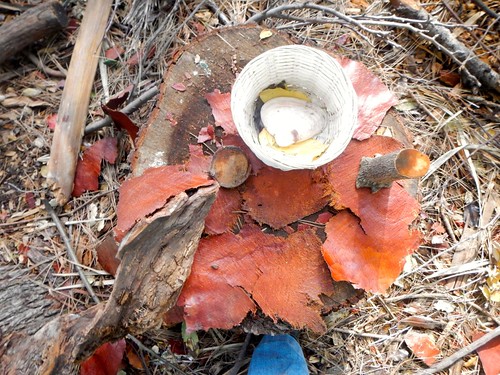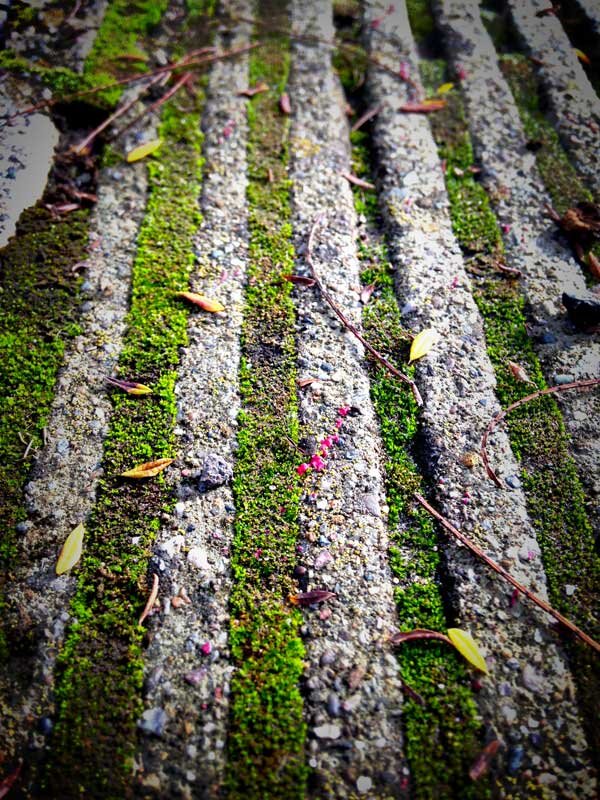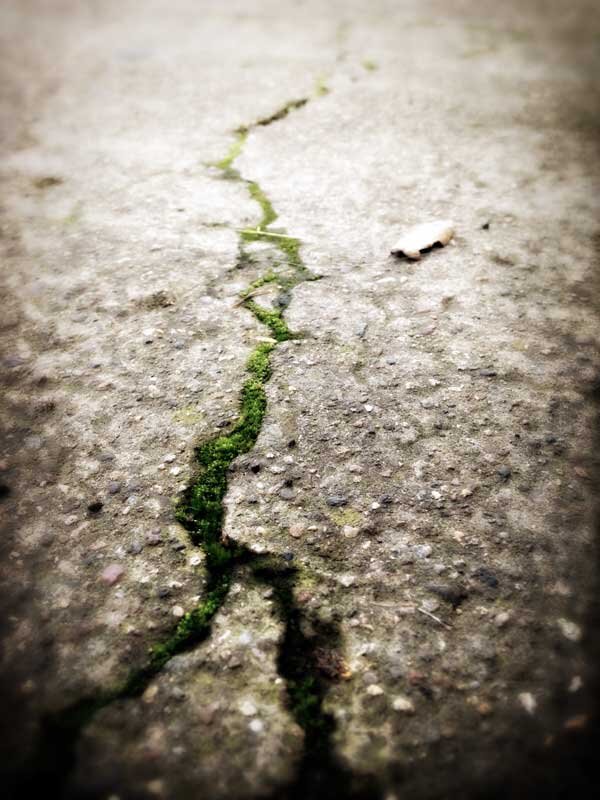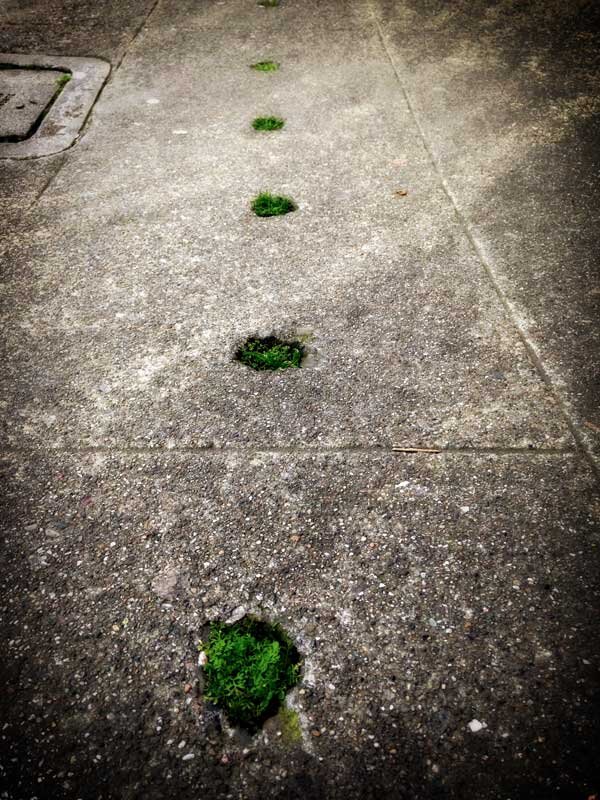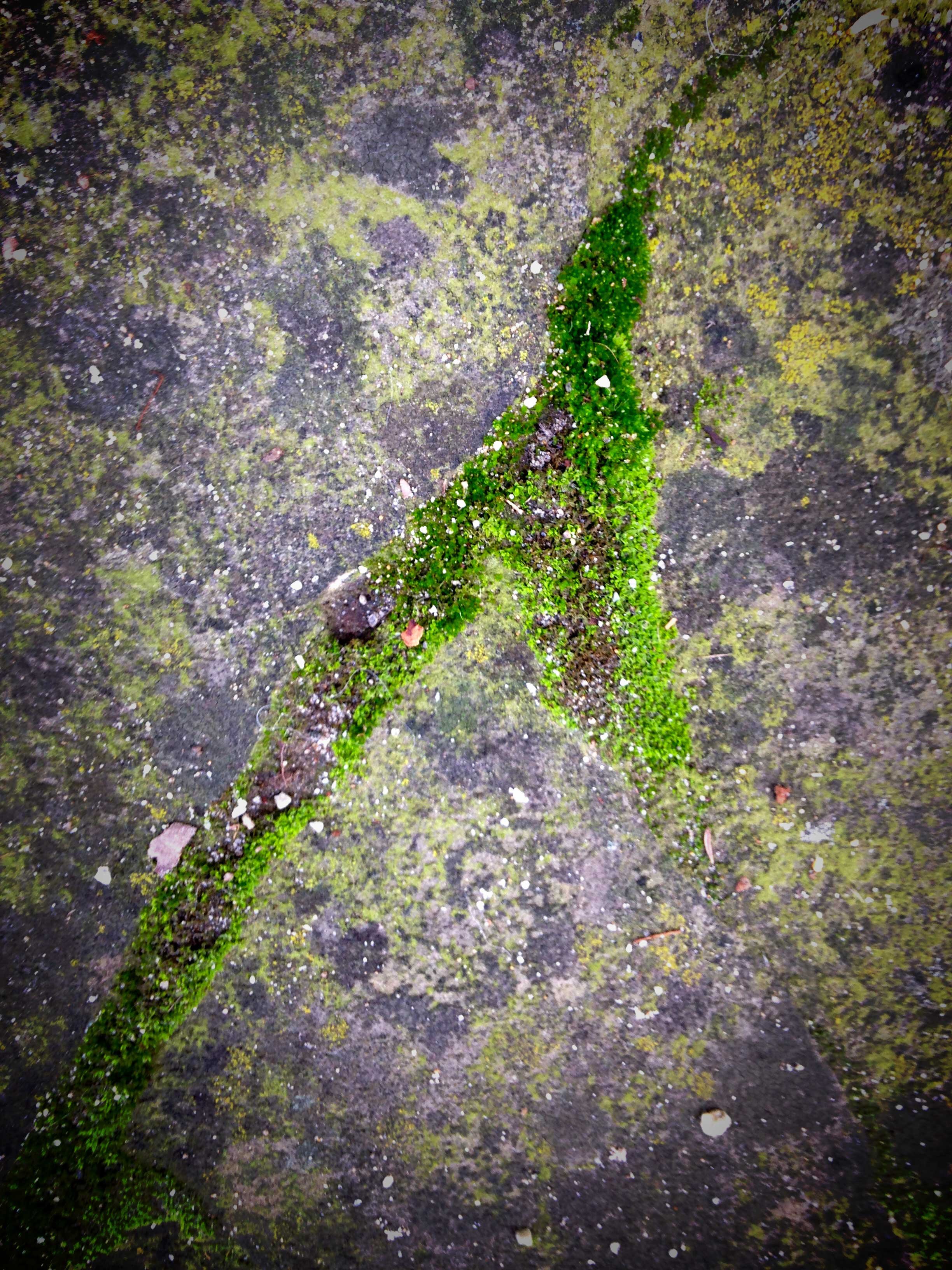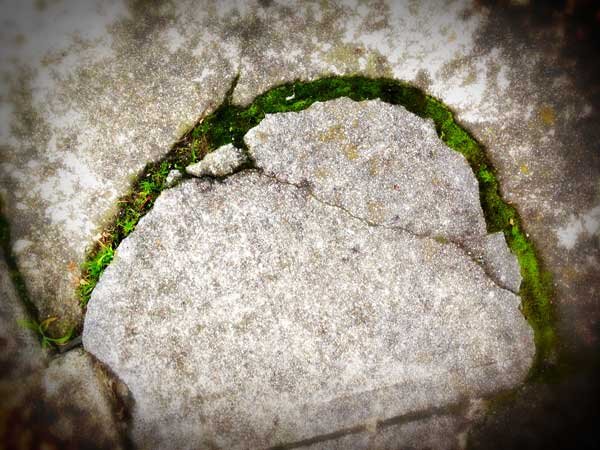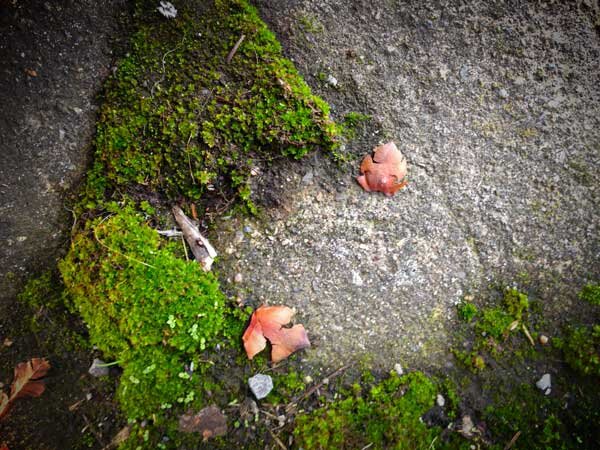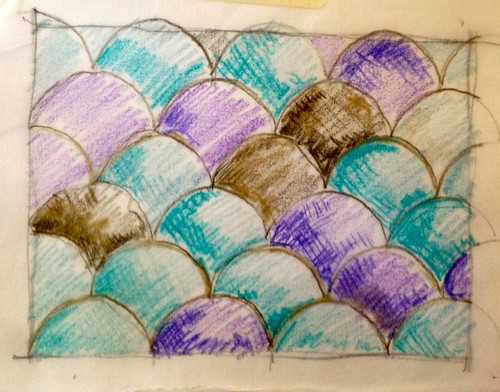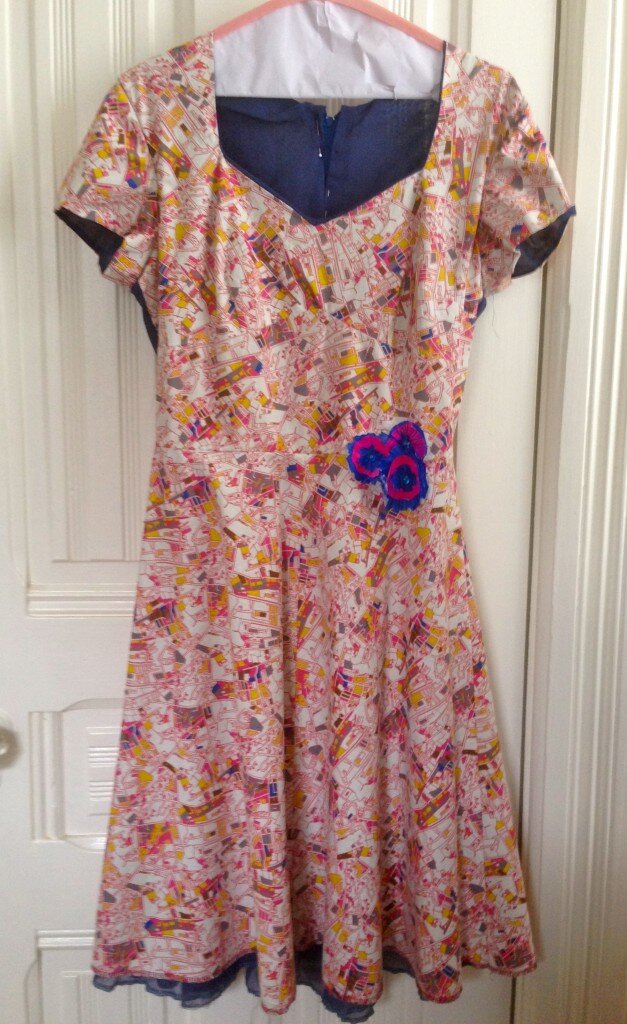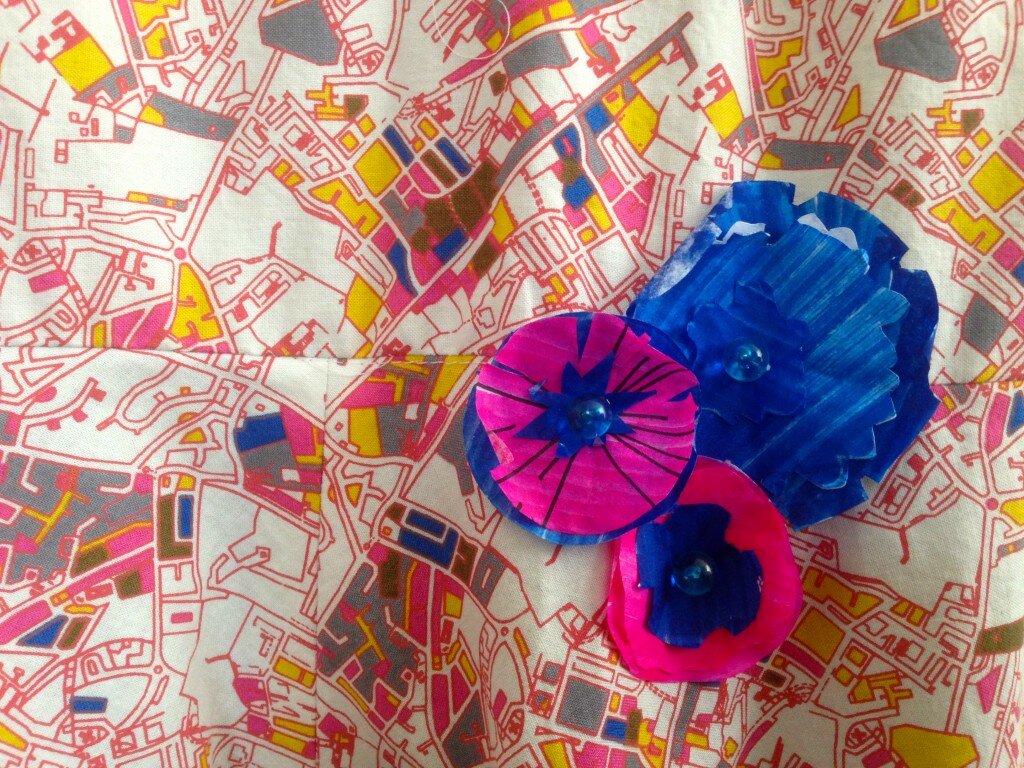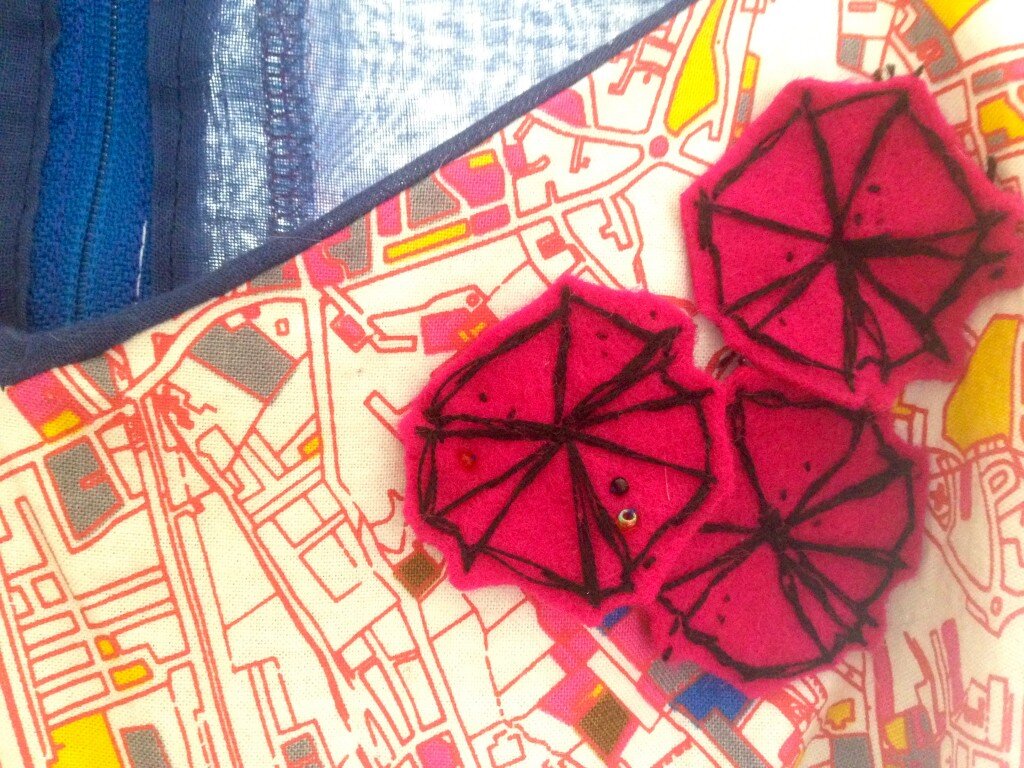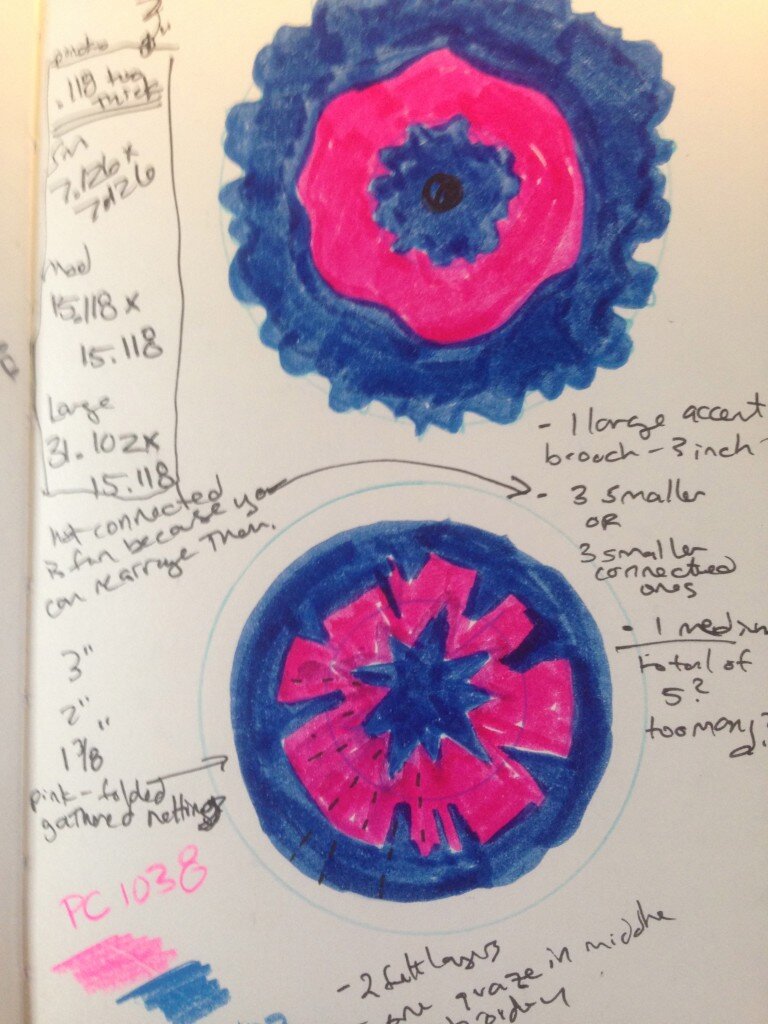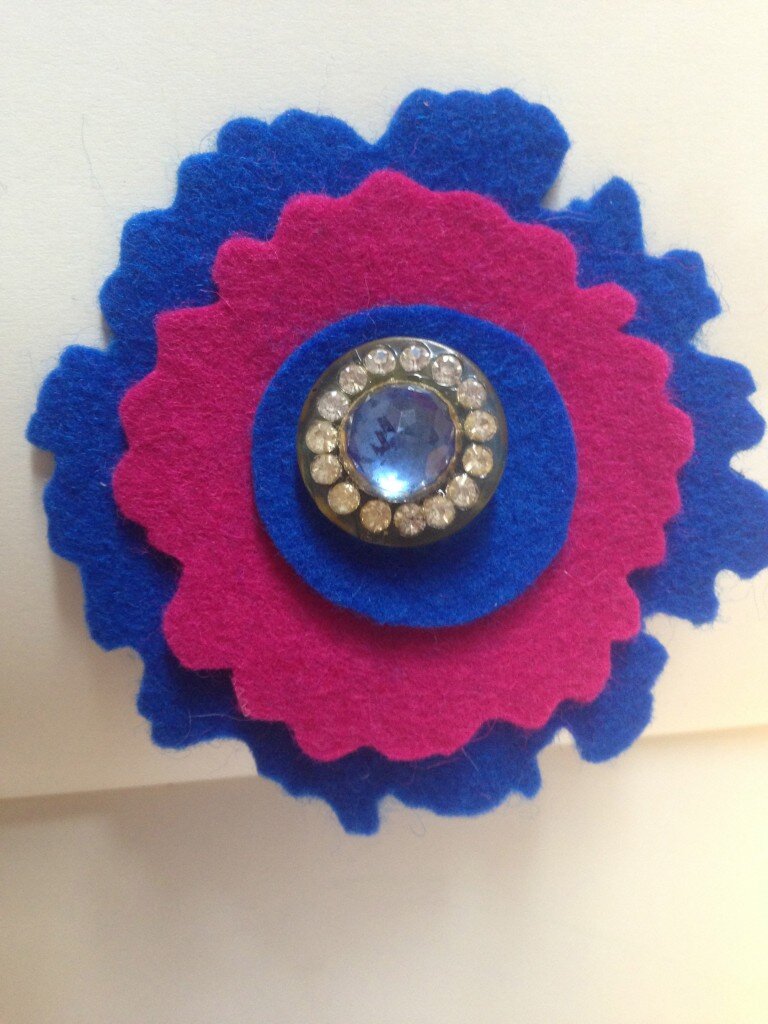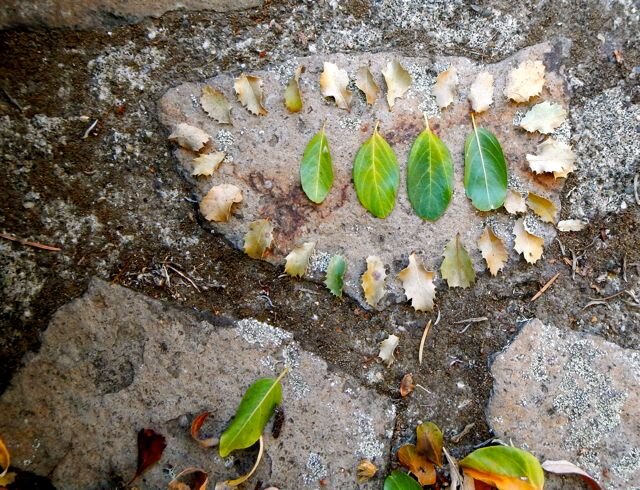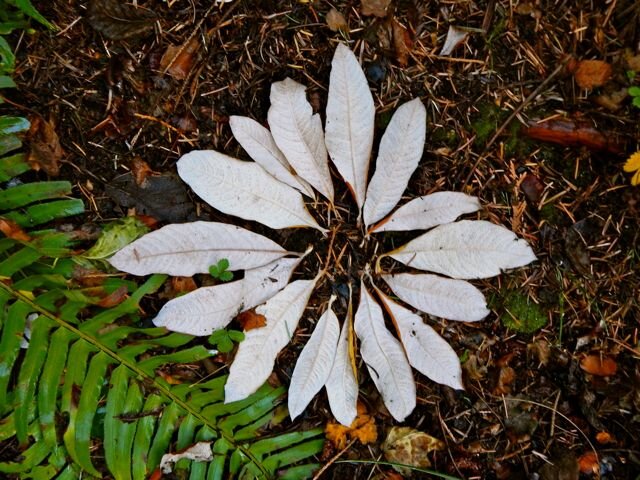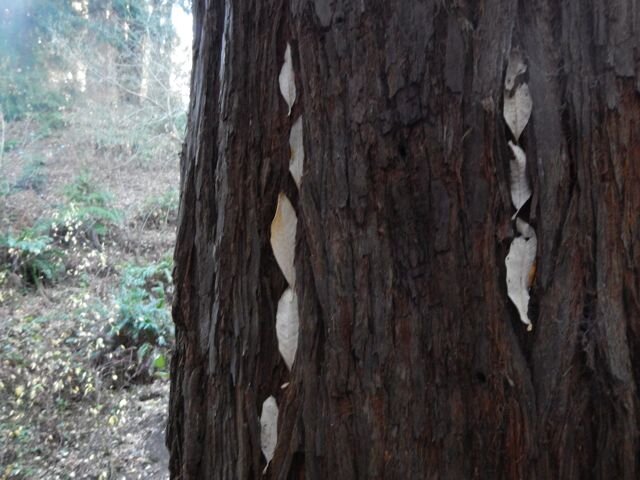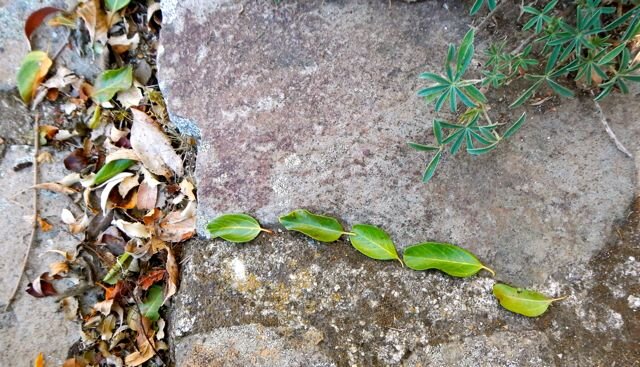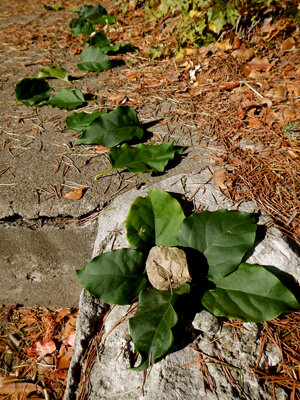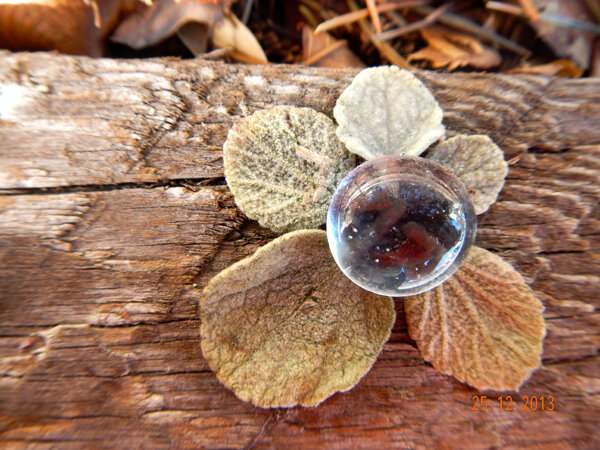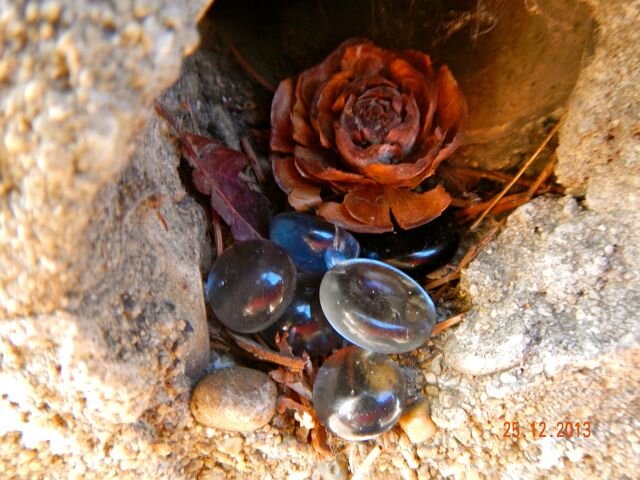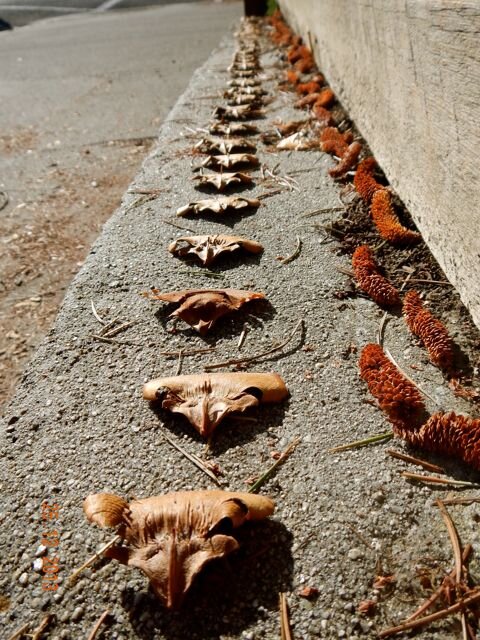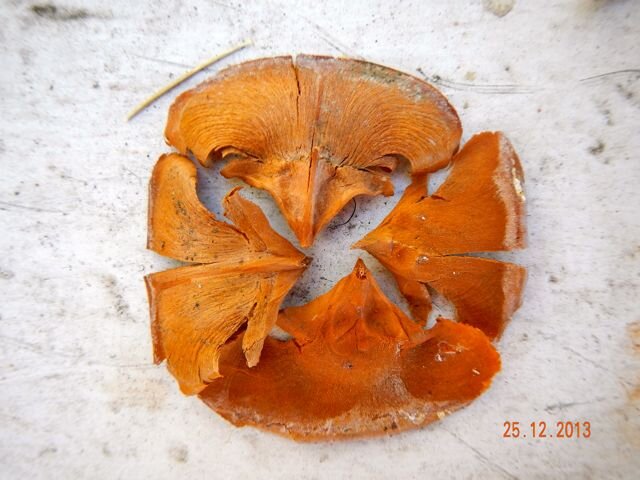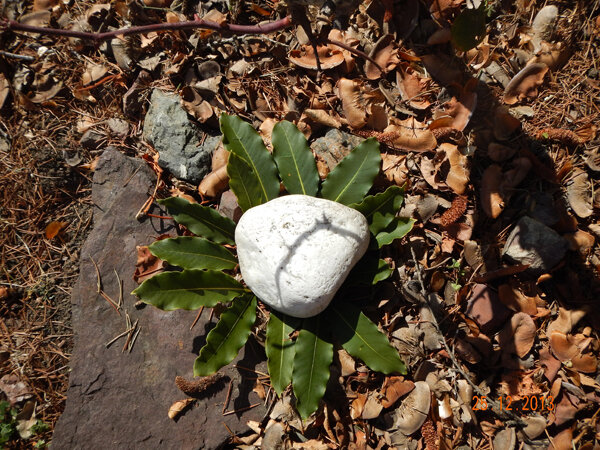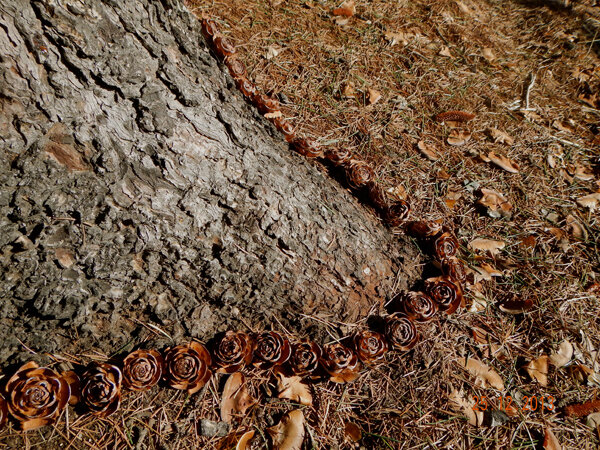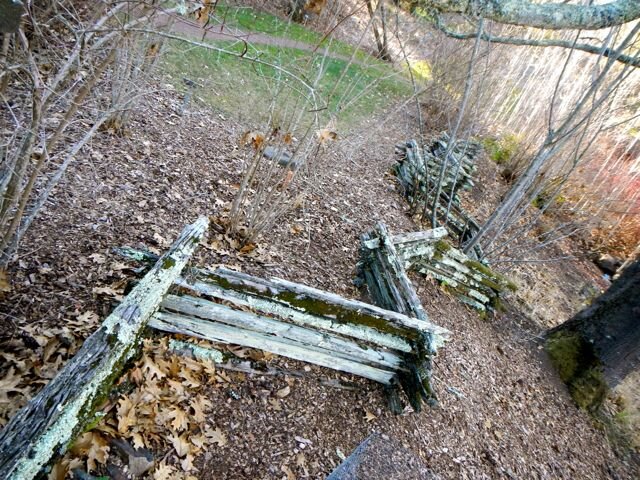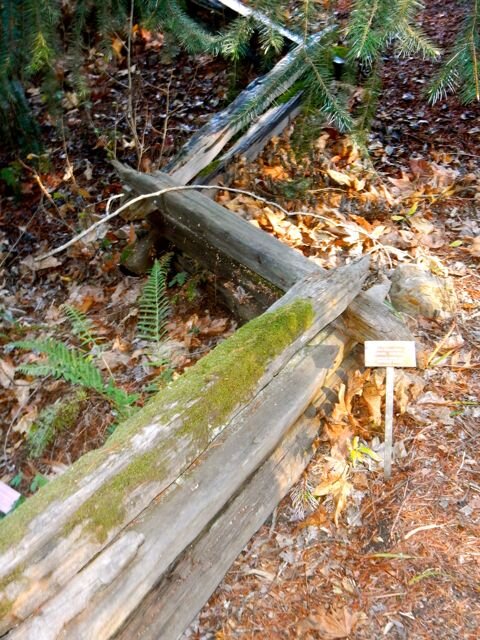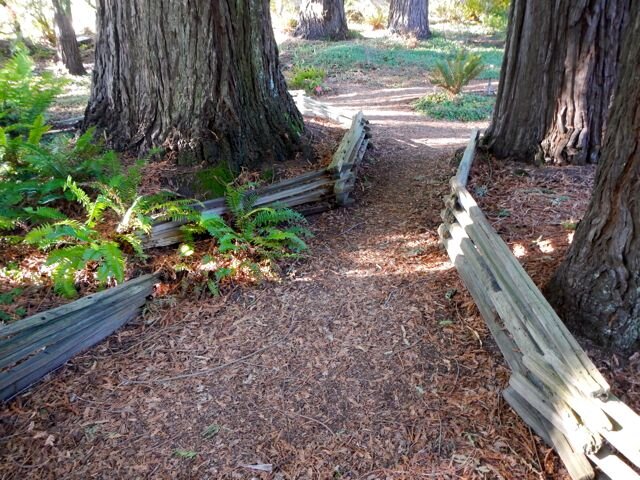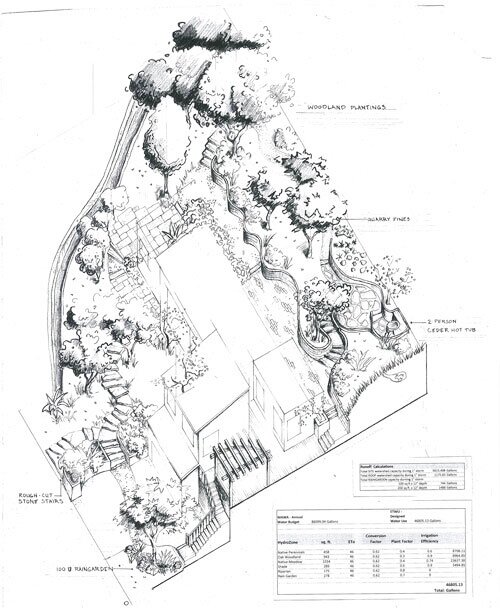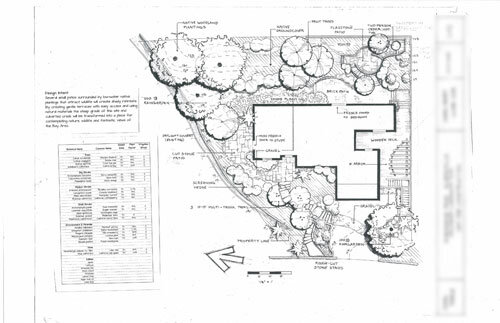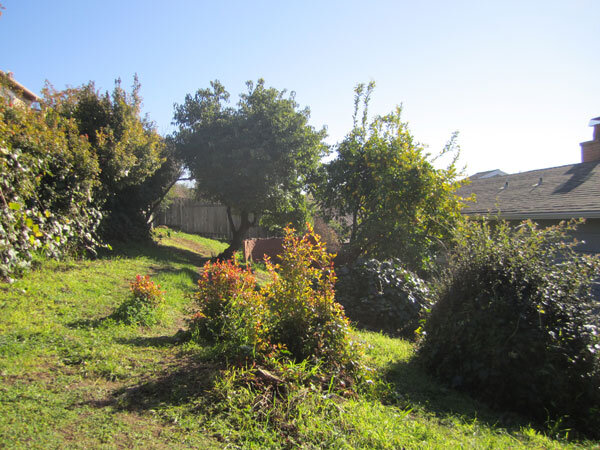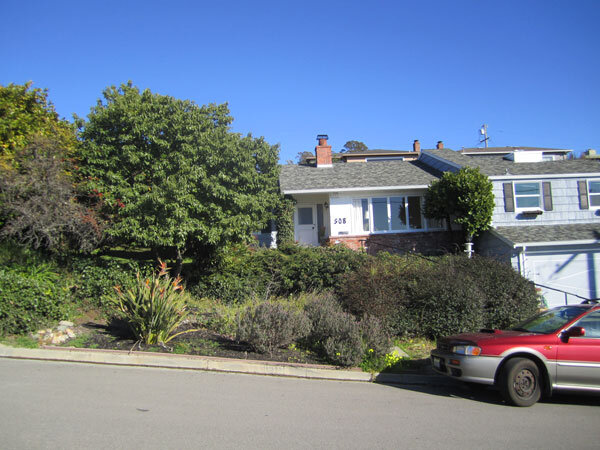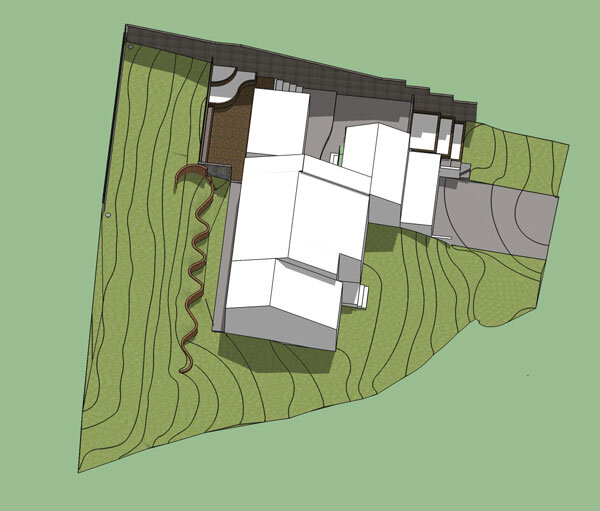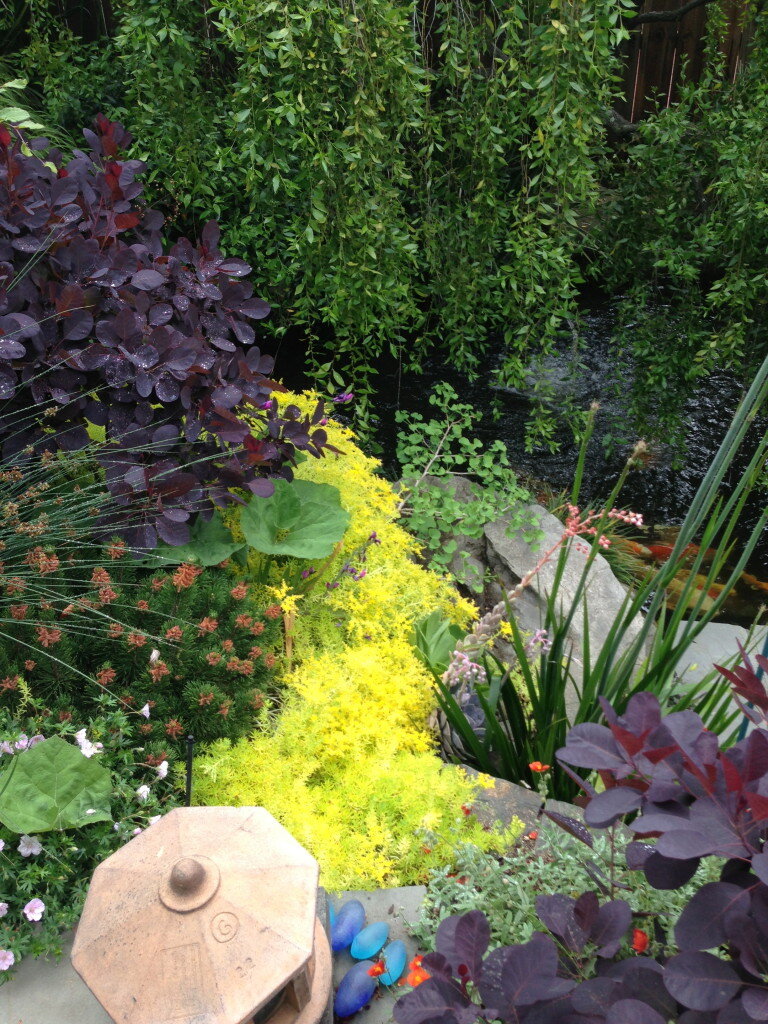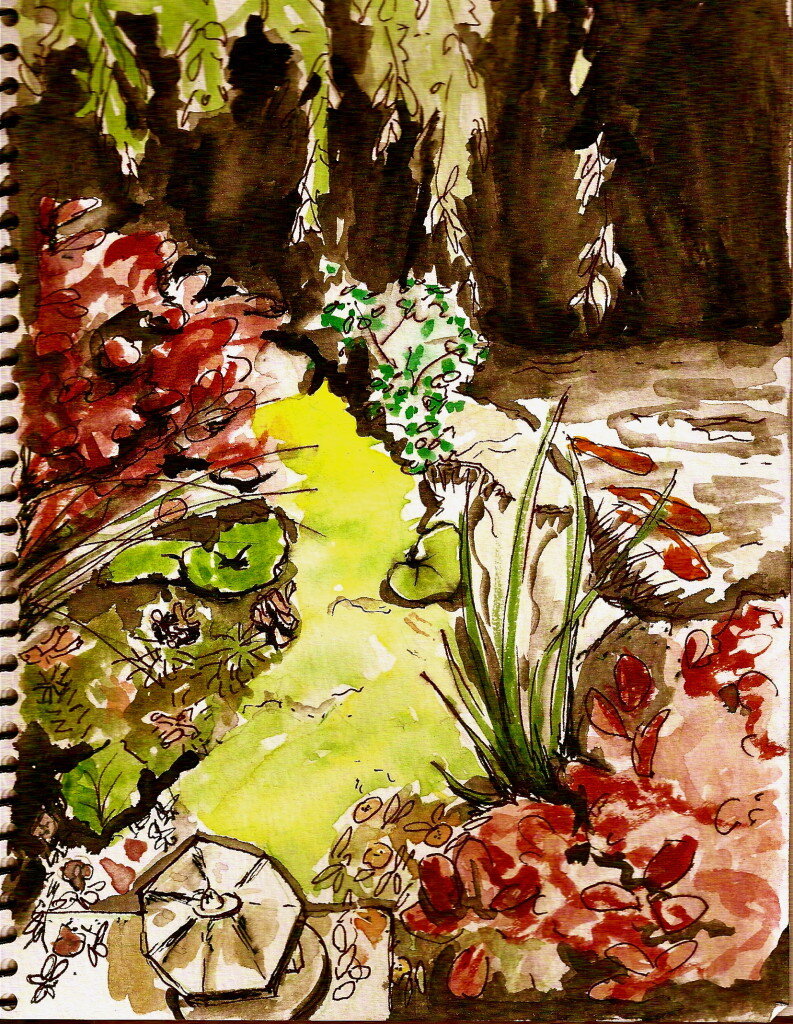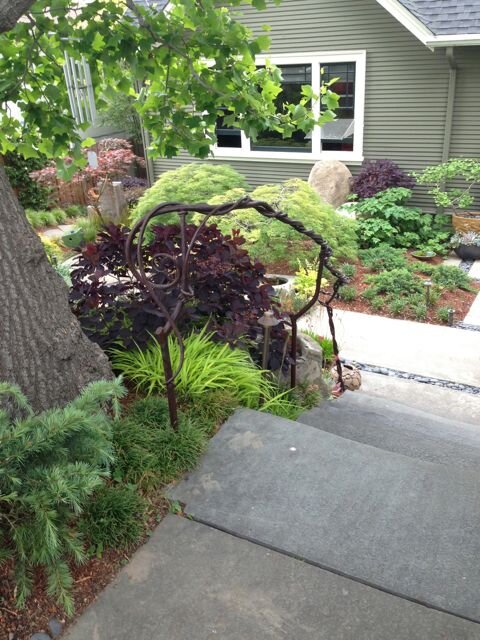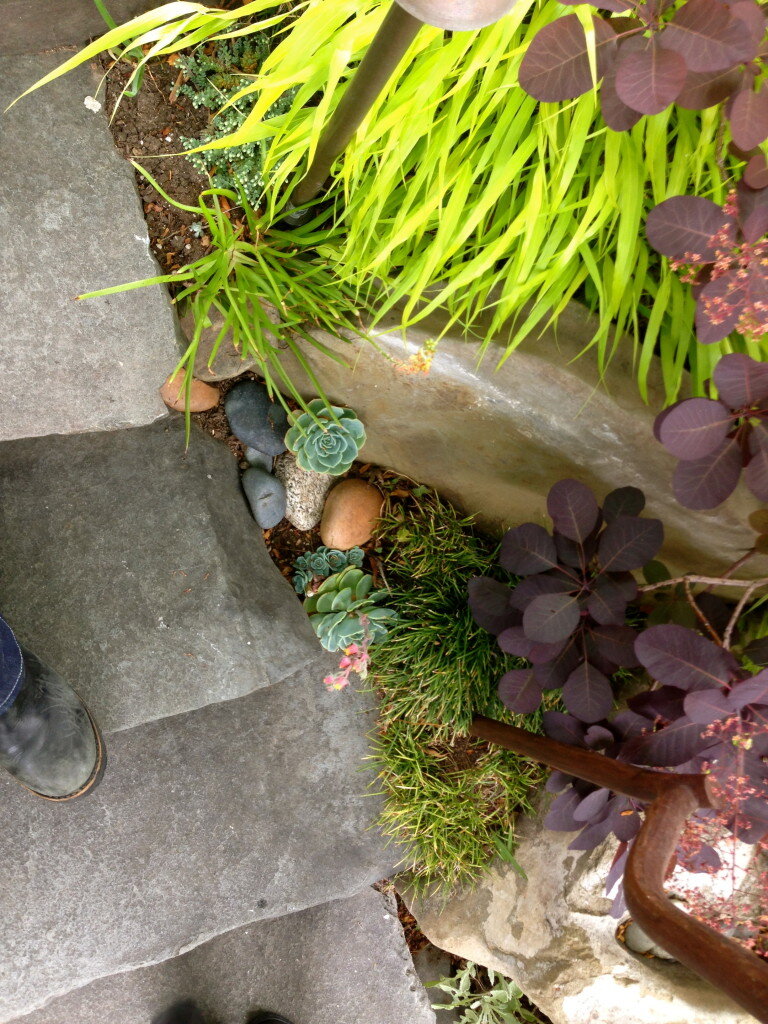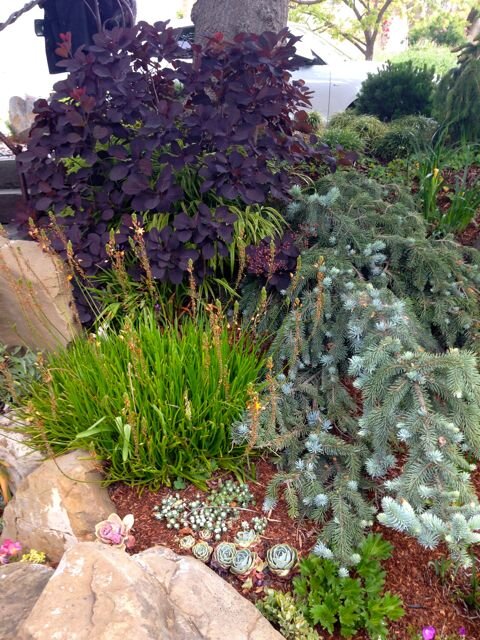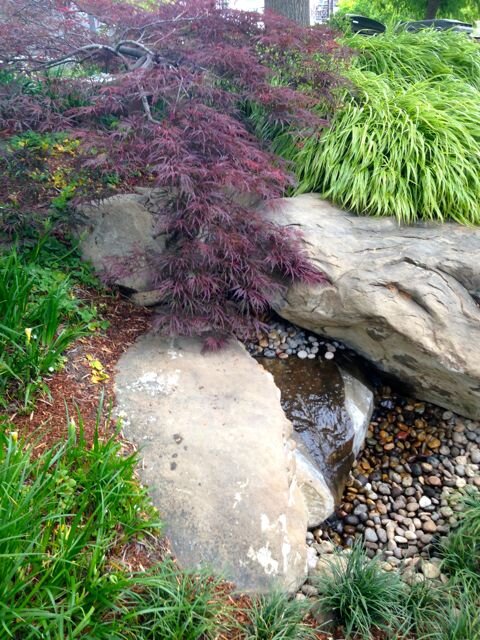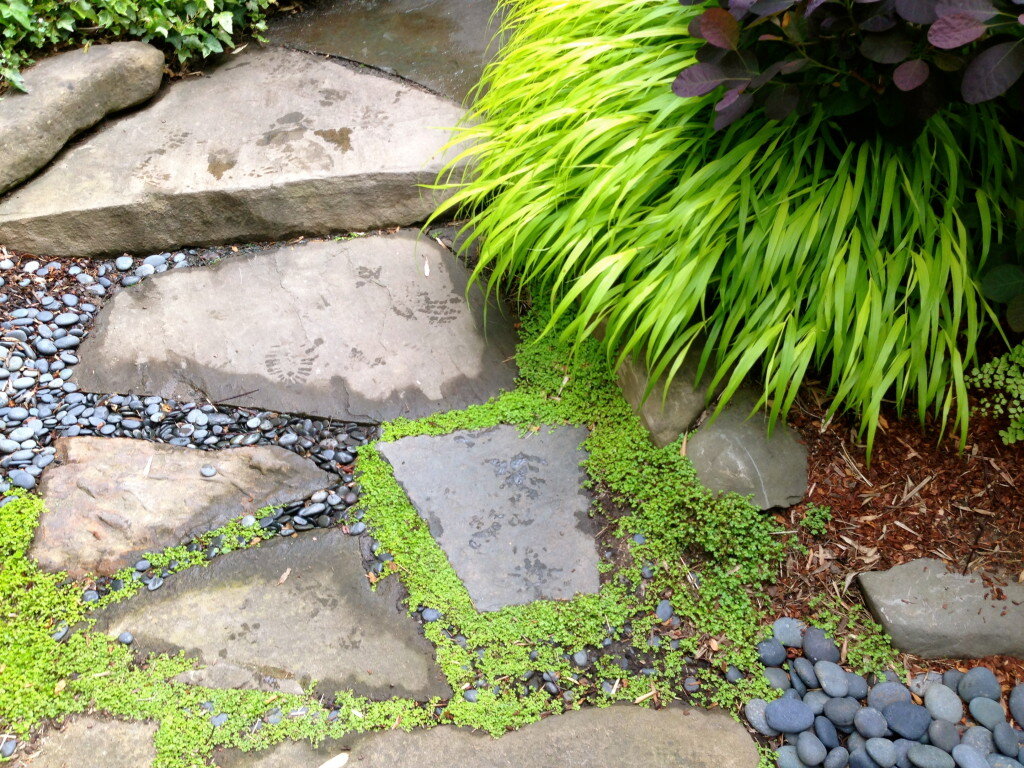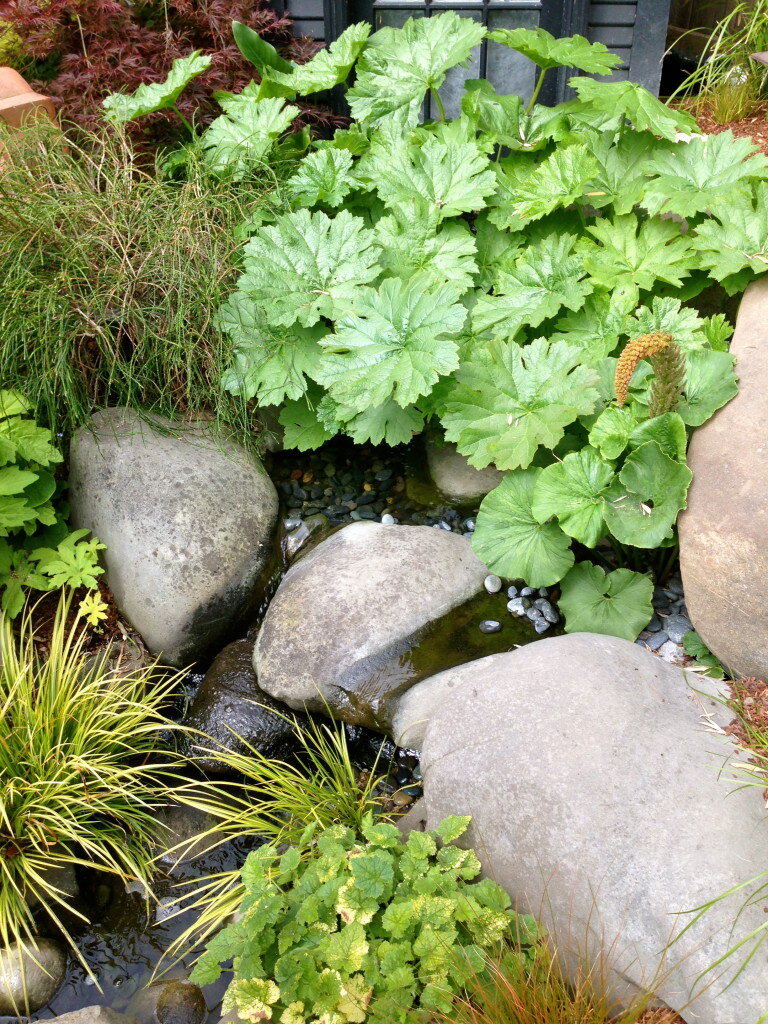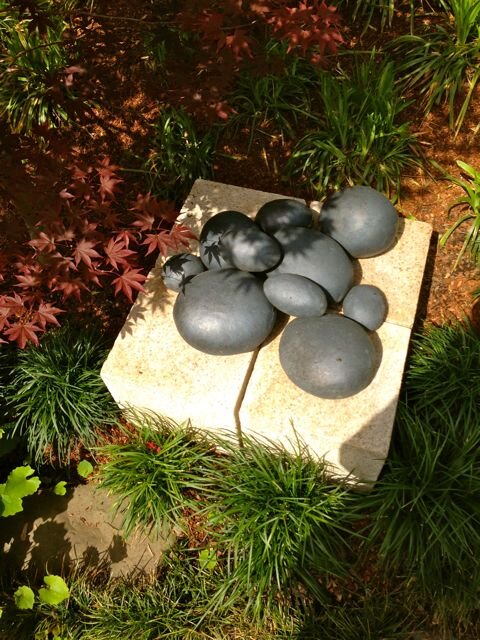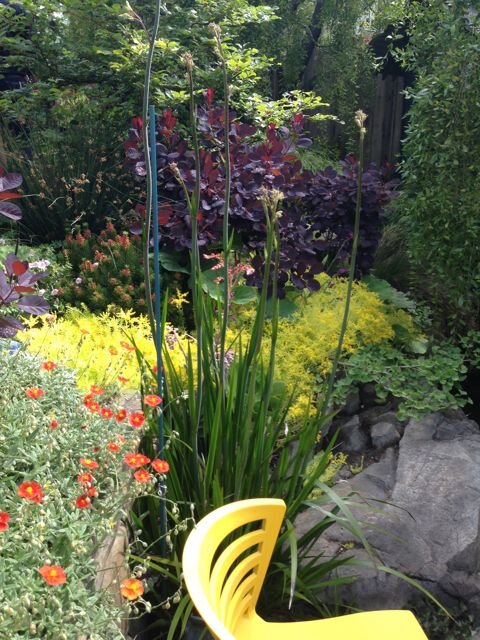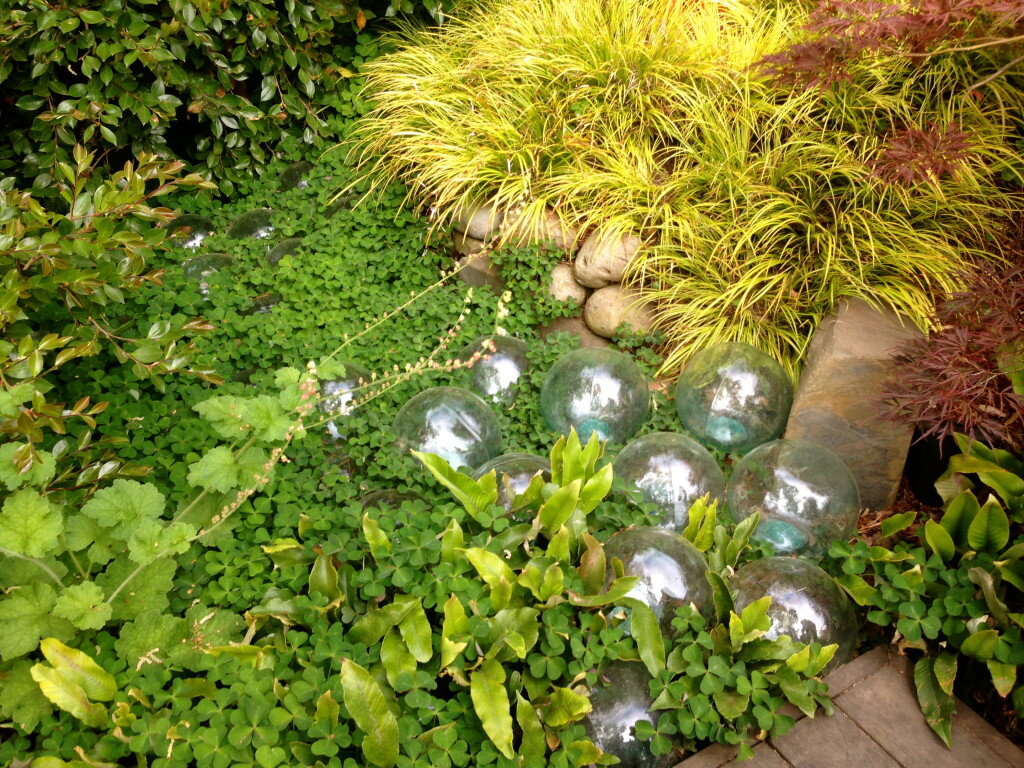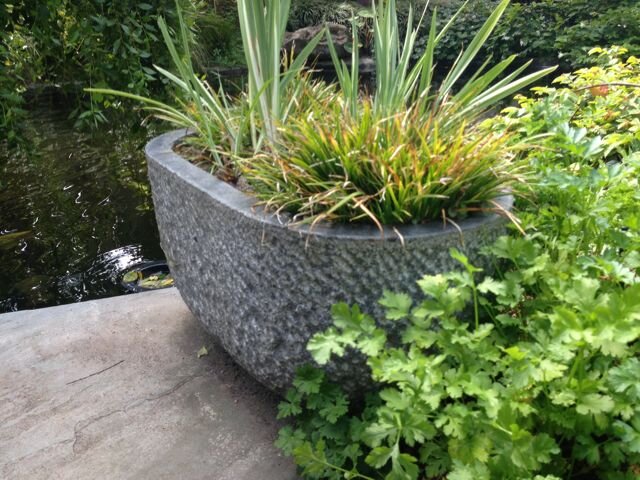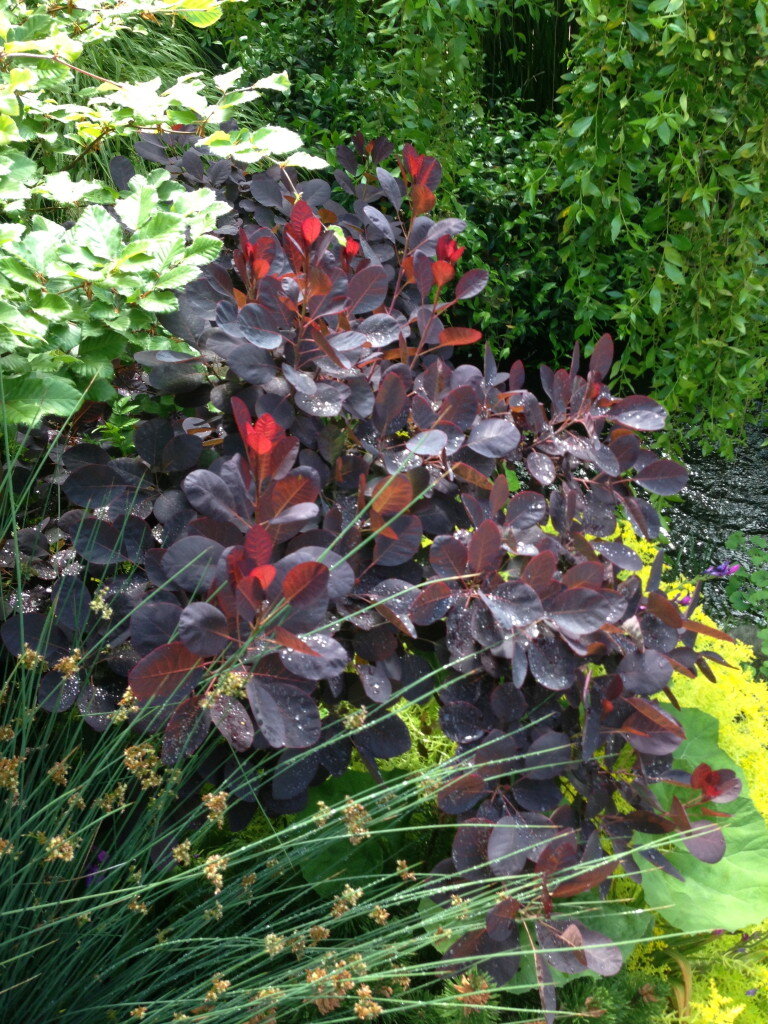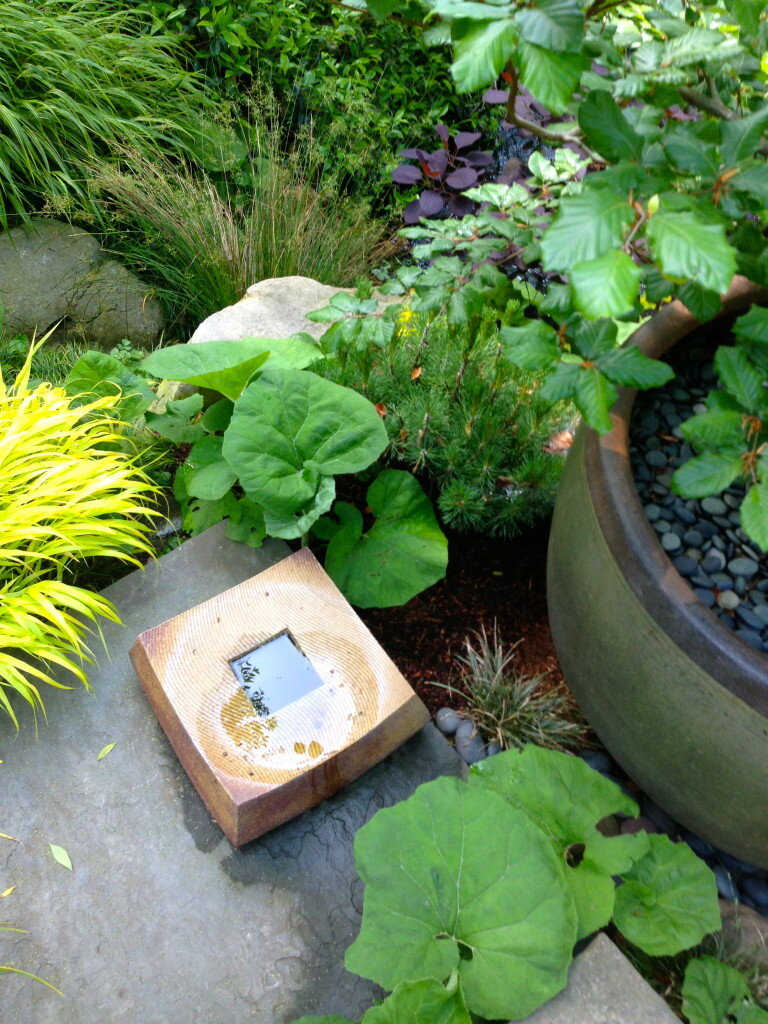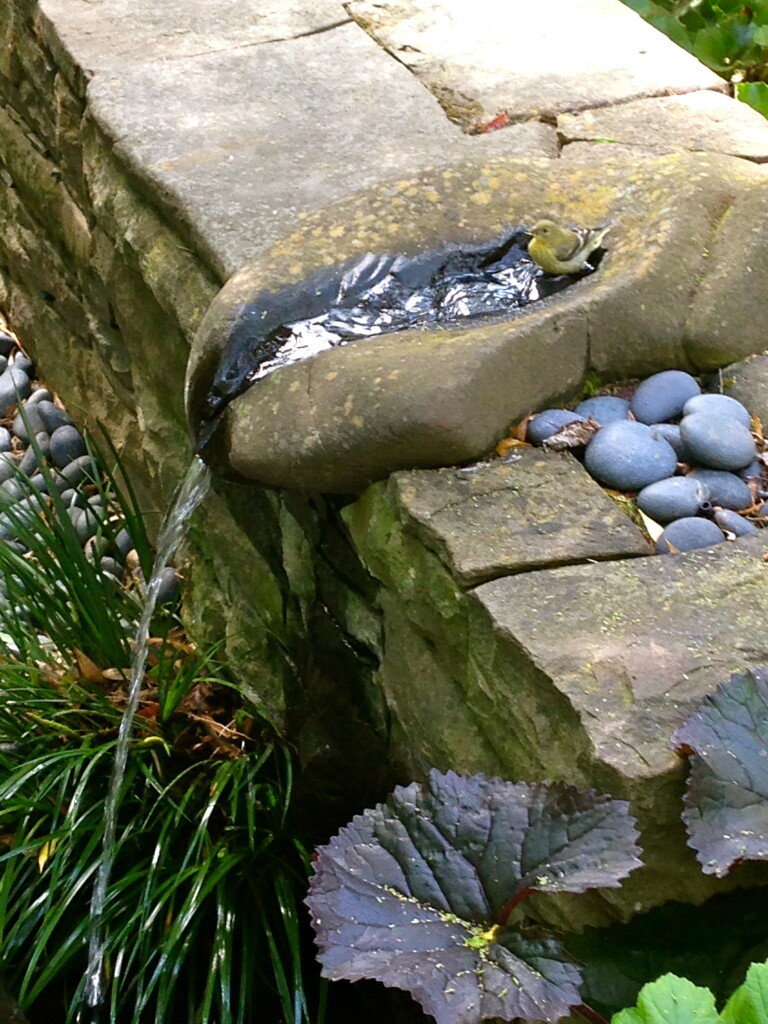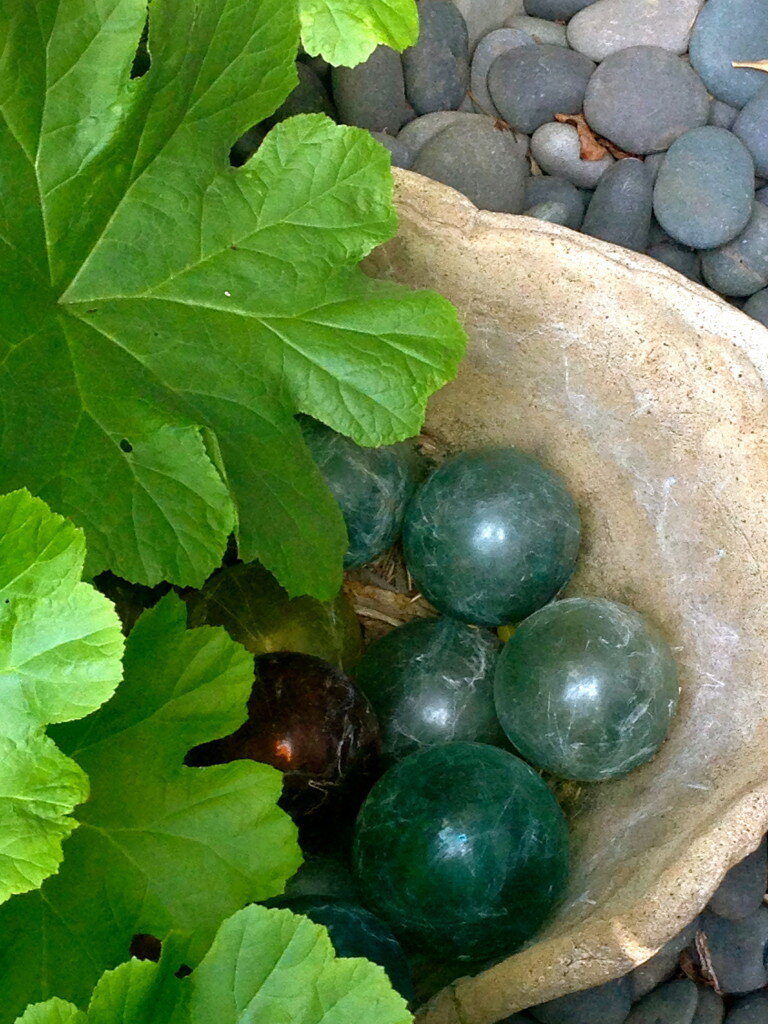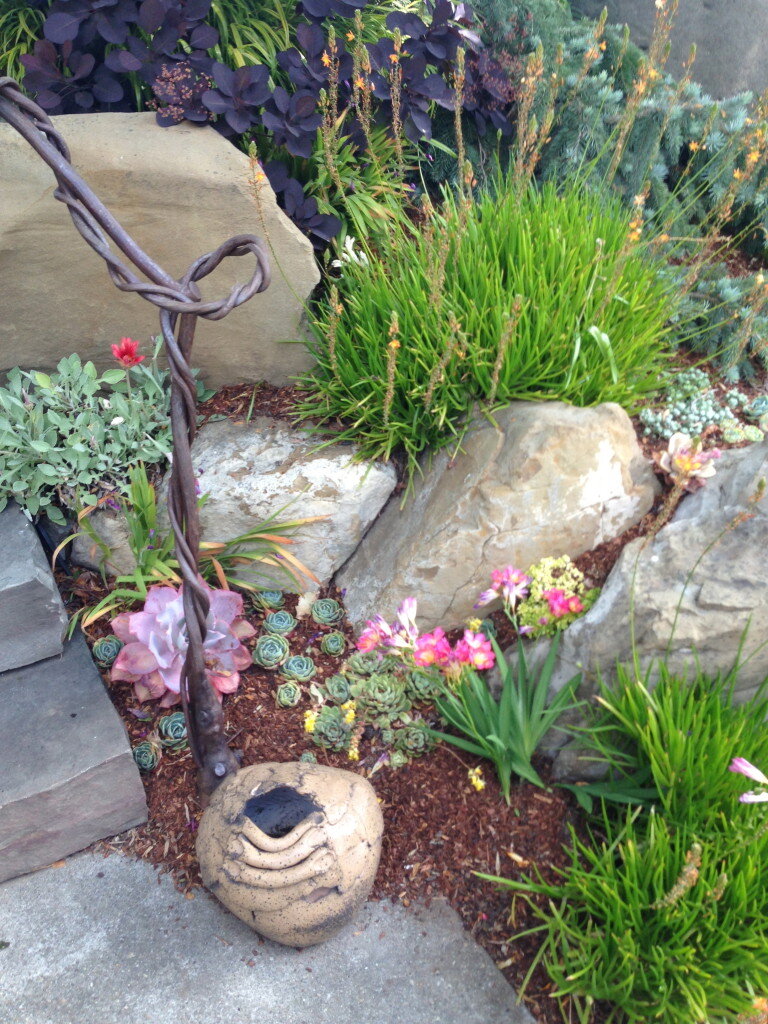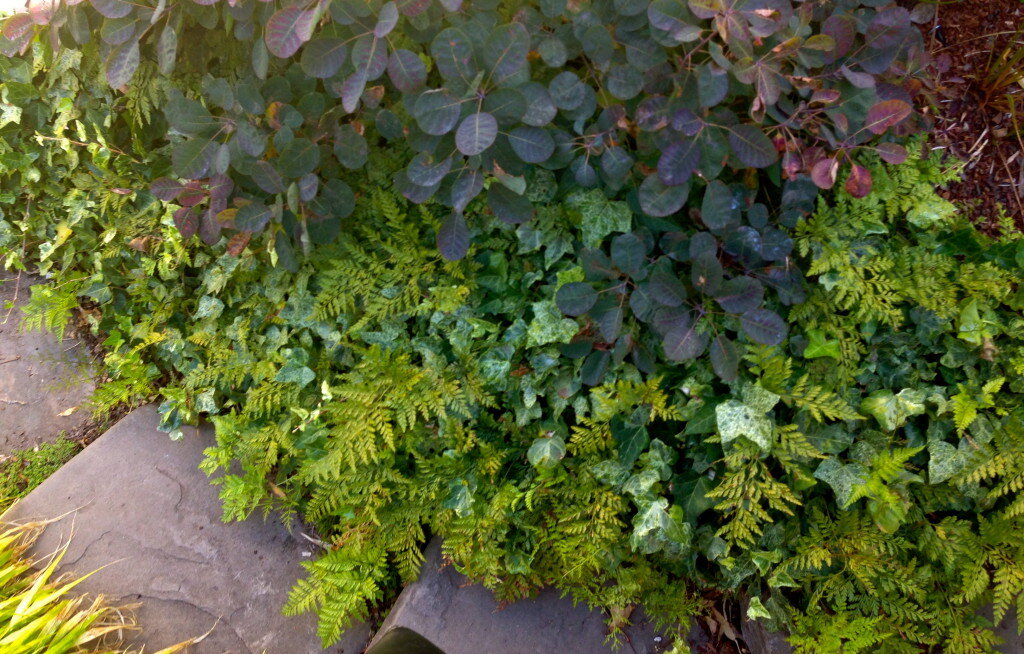Design concepts - The Six Courtyard Houses
The Six Courtyard Houses were designed by Ibarra Rosano Design Architects in Arizona.This archdaily.com article has images and plan views. I'm not familiar with the climate in Arizona. I must say that I wouldn't want to live in the landscape pictured for these houses. It's a bit.. stark and exposed.What was the thought process for it? "I would like there to be a big central platform viewable from every window in the house. Plus, three plants." heeheee. I kid! Or do I?I'm more of a Secret Garden' kinda gal. But I want to learn more about this starker more modern/contemporary style. This Pintrest Board has tons of great examples.Various design concept sketches.I need to pick one to develop further. 1, 6 or 2?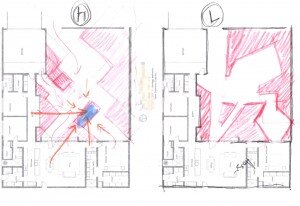
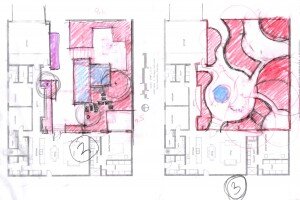
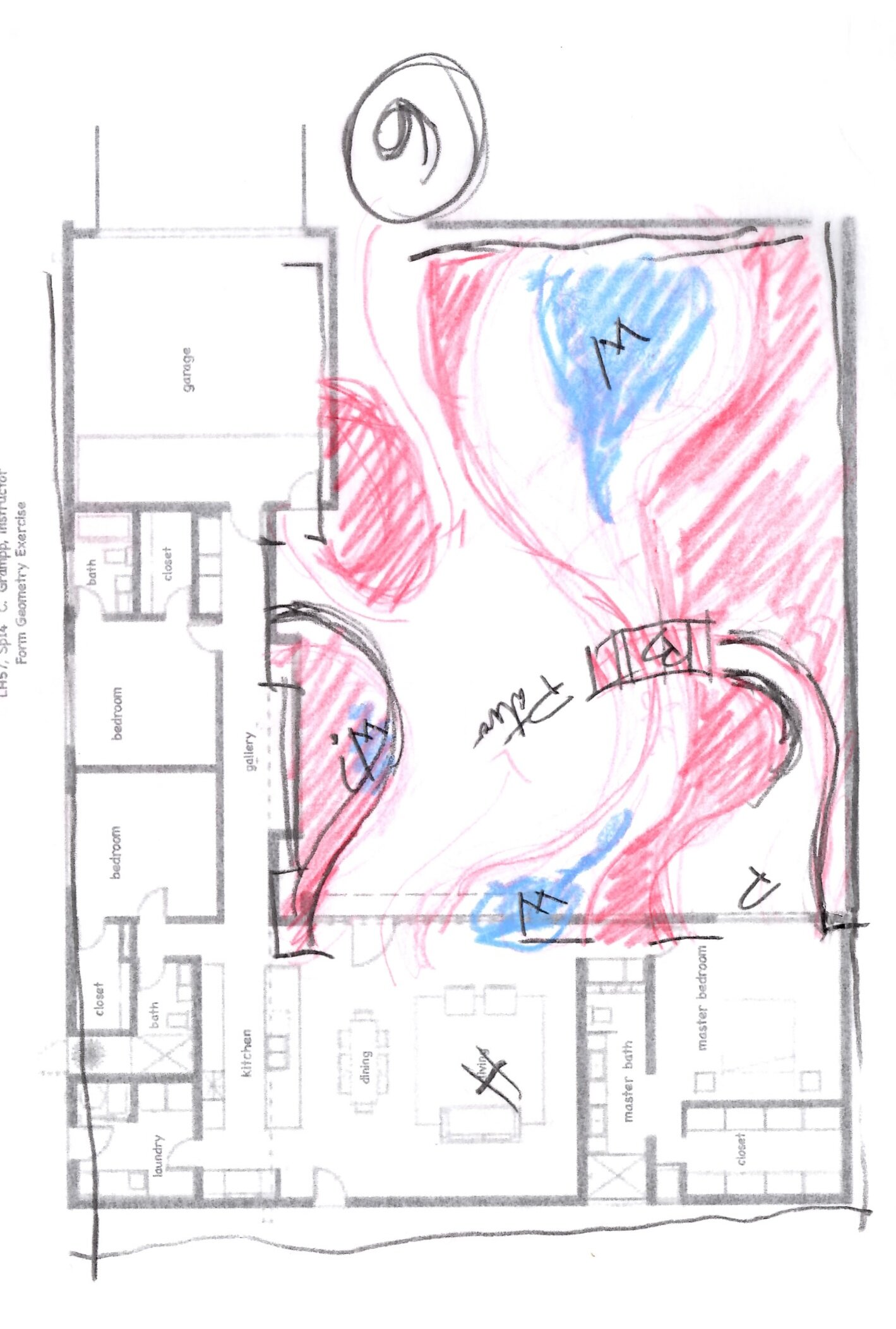
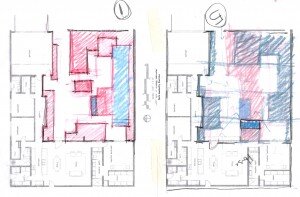
Jumping and Creating
Neighborhood Walks - Moss Edition
Color and Pattern Studies
Map Dress and Landscape Brooches
I'm close to being done with this dress. I have been prototyping the brooches. First in tissue paper and then with wool felt and embroidery.
Fun at Tilden Botanic Garden
I really love Tilden Botanic Garden. For one thing there are about one million little bridges. And there is just a pleasing variety of microclimates and fab plants.
On our last outing there we sat around and used nature to make some tiny, ephemeral art. The second one is a nudibranch or maybe a paramecium. I realize a botanic garden probably isn't the right venue for this but I did it anyway and it was pleasing.
Lagurus ovatus
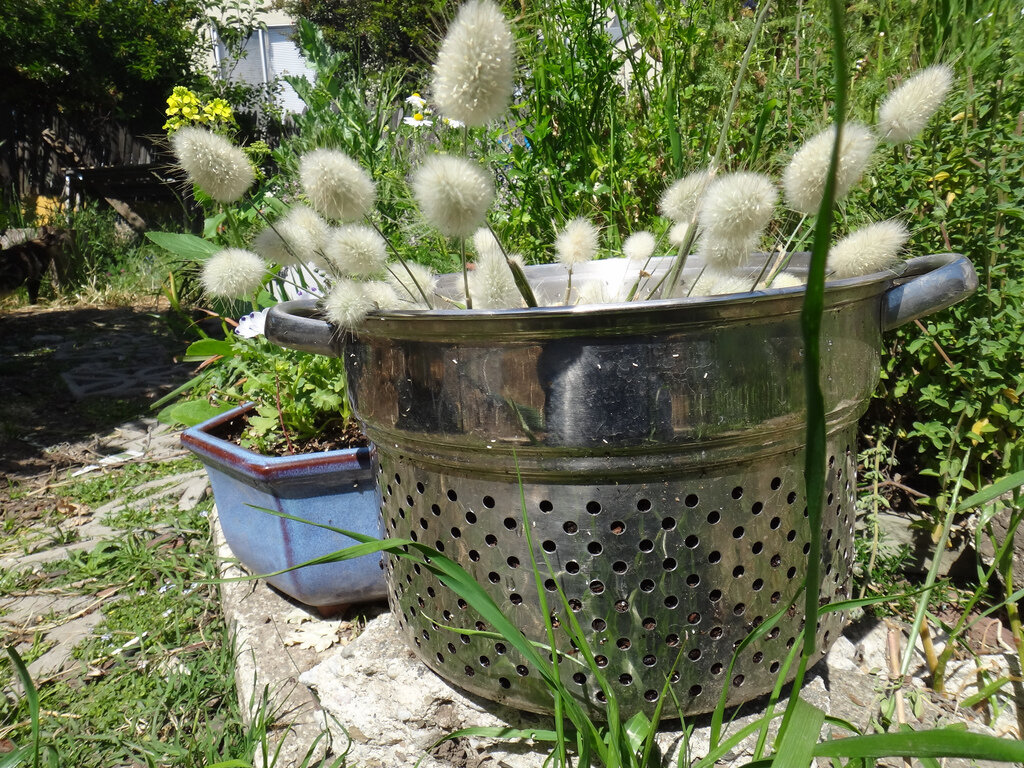 Lagurus ovatus, or bunnytail, in my yard last Spring.Lagurus ovatus is highly adorable. I had it planted in a couple of containers this summer, including this old colander. Most the kids who visited my yard made a beeline for it and spent some time petting it.I like this in containers and used as a border. It self sows though, so if you don't want to see it in the next year you can trim the seed heads before they dry and blow all over the place. If you do want to see them next year let the seeds dry and then collect them.How do you store seeds?I often use old pharmacy medicine bottles.
Lagurus ovatus, or bunnytail, in my yard last Spring.Lagurus ovatus is highly adorable. I had it planted in a couple of containers this summer, including this old colander. Most the kids who visited my yard made a beeline for it and spent some time petting it.I like this in containers and used as a border. It self sows though, so if you don't want to see it in the next year you can trim the seed heads before they dry and blow all over the place. If you do want to see them next year let the seeds dry and then collect them.How do you store seeds?I often use old pharmacy medicine bottles.
Christmas day nature art
I bought myself the book Land Art in Town: Simple Inspiration Through the Seasons for Christmas this year. It is an awesome book. The author, Marc Pouyet, hung out in cities across Europe and made and photographed his land art. I call it nature art and think of land art as bigger earthworks type stuff. I'm more drawn to this smaller scale, urban, unexpected art using nature.Here are some of the things my sister, son and I created.
Worm fence or Split-rail fence
We have to think about fencing quite often in landscape design. They serve to keep things in, to keep things out, delineate property, to screen views and maintain privacy.
“We shape our dwellings, and afterwards our dwellings shape us.”
But what is a worm fence, you ask? You will recognize it when you look at my pictures below. It’s a fence made from wood in a zip-zag pattern. I believe it is a mostly American type of fencing. I do wonder why the Americans did not employ the hedgerow as a barrier more often.
As you can see in the example below the worm fence does not need to use posts and instead alternates logs in that zig-zap pattern. I talked before about the serpentine brick wall and how it creates more stability than a straight brick wall, well the same applies to the worm fence.
Check out all these worm fences at Tilden Botanic Garden! In this case these fences are just trying to keep garden visitors from trampling the plants and straying off the path.
I found this book Between Fences in a used book store not too long ago. It is from an exhibit about fences at The National Building Museum (on view from 1996-1997). This is a very interesting book with chapters about worm fences, barbed wire fencing, hedgerows, picket fences, and more.
Oh! I should write a post about the stone walls of New England at some point (makes mental note).
Olive Percival and her children's gardens
The other day in a used bookstore I came across a book called 'The Children's Garden Book' by Olive Percival. I now know this is only an excerpt from the full, never published, manuscript.The first line of the forward is, "This is a book of suggestions for children to whom destiny has given such golden things as a plot of ground and many hours, or several years, uninterrupted by the city's call (ever more insistent, clamorous) to indoor amusement".And further down, "If, for the first ten or twelve or fourteen years of life, the children of today could have personal flower gardens in which to play, to study, to read, to work, to dream, the world tomorrow would be greatly lightened of it's ugly and menacing burden of materialism and general faithlessness".The next section of the book are thoughts and notes to the "to the young gardener".Here is an example, "Long ago, in Elizabethan England and when our colonial history was just beginning, a bouquet was not called a bouquet nor a nosegay nor a boughpot by those of highest fashion. It was called a tussy-mussy! Nobody seems to know why."Thanks to the internet you can read all about tussy-mussies!The books goes on with more tidbits and advice and then she shares her garden plans for children. Things like "the Fairy Ring", "The Kate Greenaway Garden", and "the Moonlight Pleasance". Each garden comes with a plant list, and illustration and planting plan and text describing details of the garden.
"In this our lovely and bedazzling world - a perplexing world that deafens and deadens us with screaming sirens, rattling dragons, many toys, and noisy amusements (omg, girl, you have no idea.) - we contrive to to remain avowed lovers of flowers, even if allowed little time or place to make plants grow and willingly or unwillingly come into blossoms."
It is so sweet. I fell in love with Olive Percival. Besides being a gardener of some fame and a published writer and poet, she was also a book and doll collector, an antique hat collector AND a milliner, an expert on Chinese and Japanese art, a traveler, and a photographer and generally a mover and shaker amongst the intellectual set of southern CA.I love her because not only was she sweet and all into flowers, paper dolls, cats and 19th century children's books but she was also a feminist and could bust out a bit of snark. We would have been friends for sure. Here's a quote from an article she wrote for the LA Times in 1910,
"As for equal suffrage, I have never in my life heard one sane argument against it. I think the only argument that men who are opposed to the measure have ever advanced in justification of their unfair and un-American position, is that they do not want women to lose their delicacy and charm by rough contact with matters political. This is not 'sentiment' but sentimentality. . . . There is no sense or intelligence about it. Women must live in the world as truly as men and in many instances they are as well equipped for the actualities of life as men. . . ."
I have acquired one other book written by her, "Our Old Fashioned Flowers". The Huntington Library in Pasadena, CA has her diaries and photographs.I may have to road trip to the Huntington Library to see her photographs and all the gardens and art that it looks like that museum and botanic garden have. It looks awesome! They have a tea room! Maybe I will go by myself for my 40th birthday (fast approaching). - Olive May Graves Percival (July 1, 1869 - February 18, 1945).You can read more about her here.I HIGHLY recommend listening to this 30 minute talk about her life. *sniff*Oh, and someone's term paper on her life here.The more you read about her the more awesome she gets.
Post-Punk Eco Moss Graffiti
I can’t remember where I saw an example of moss graffiti online, but it looked so neat I wanted to try it for myself. My house does not have a good moist, shady place for moss graffiti to flourish. I chose our shadiest spot in our side yard to try it.
You have to start with some actual moss so I (don’t tell anyone but I snitched some moss from the very mossy courtyard at the Landscape Horticulture Dept. of Merritt). So, contraband moss in hand, I popped that in to a blender with some buttermilk, water, and sugar and then headed out do some painting.
I did some freehand designs and then I made a stencil of Joan Jett because why wouldn’t I? I cut that out of printer paper and then traced it on to the wall with a pencil and painted inside it.
What would Joan Jett do?
I’m thinking she would not be putzing around with moss graffiti in her backyard. Whatever, this was fun. The moss did not grow and flourish. Instead, it just sort of dried up and stayed there.
Things to Remember
Note to self: The proper order for writing down dimensions is…
Width x Height x Depth
School Project - Sloped site
This is a project from a design class a few semesters ago. It is a sloped site in El Cerrito with nice views and a daylighted culvert.It had an interesting feature in the backyard - a serpentine brick wall, also called a crinkle crankle wall. Neat! It seemed oddly wasted as a wall along a narrow path at the back of the house where no one would ever see it if it was meant to be decorative. However, it DID make sense once I learned that a brick serpentine wall is a very strong retaining wall. It can be only one brick thick, saving space and money while adding some visual interest.
"This ingenious technique of garden wall construction has been used for several hundred years. The serpentine shape provides lateral strength to the wall so that it normally can be built only 4 in. in thickness without additional lateral support. Since the serpentine wall depends on its shape for lateral strength, it is important that the degree of curvature be sufficient. The following general rule is based upon the performance of many successful serpentine walls. The radius of curvature of a 4 - in. wall should be no more than twice the height of the wall above finished grade, and the depth of curvature should be no less than 1/2 of the height." -from http://www.gobrick.com/
The daylighted culvert was another interesting feature. The easements surrounding it meant we couldn't do anything to change it to make it less all about ugly concrete. Still, it provided a nice water sound and wildlife habitat.The assignment was to create a landscape plan and plant list for the front and backyard and do all the Water Efficient Landscape Ordinance calculations.
"There are two water budgets in the Model Ordinance; the Maximum Applied Water Allowance (MAWA) and the Estimated Total Water Use (ETWU).The MAWA, is the water budget used for compliance and is an annual water allowance based on landscape area, local evapotranspiration and ETAF of 0.7. The ETWU is an annual water use estimation for design purposes and is based on the water needs of the plants actually chosen for a given landscape. The ETWU may not exceed the MAWA." - from The Updated Model Water Efficient Landscape Ordinance Brochure
This was also the property used in my concurrent Grading and Drainage class. We used a zip level to map the site elevations and worked out a complete grading and drainage plan for the property.
Another brick serpentine wall resource: http://www.masonryconstruction.com/
Painting with plants
I am focusing in on plant color and texture right now.I have had the opportunity to visit the personal garden of the owners of Potomac Waterworks twice, once in the Fall and once in Spring. I mean, what a lovely garden! My inner 8 year old wants to live there with the fairies and unicorns and so does my outer 40 yr old. :)Not only is it a technically marvelous construction project but it is the most thoughtful and beautiful landscape painting I have ever stepped into.This is a watercolor painting I did based on a photo I took:
While there are many "rules" you can learn and follow around color and texture in the garden you really have to be an artist to accomplish this.

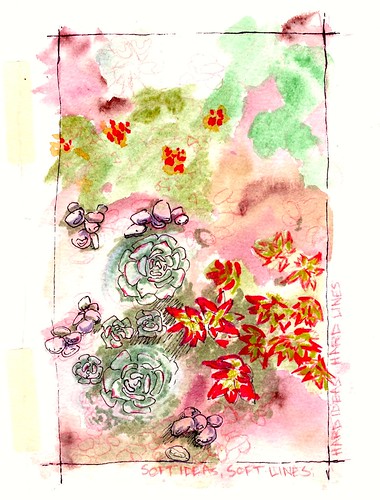
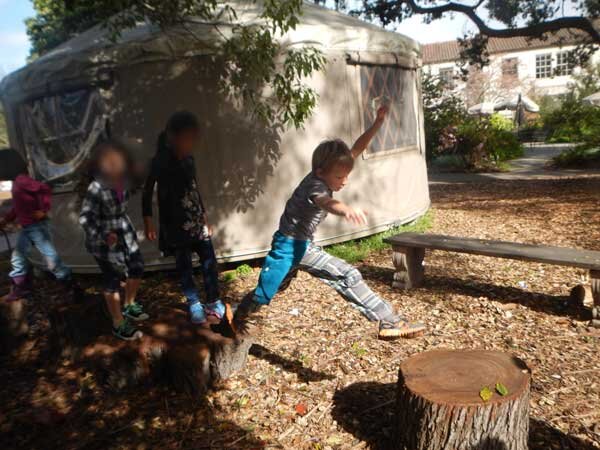 or for building on...These are rolly poly houses.
or for building on...These are rolly poly houses.